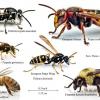I found some camera code on the net and tried to use it. It was really old so I converted it and the wasd works but the mouse look doesn't. It's giving strange results. I was wondering if anyone can see something in the math thats wrong? Like in the pitch and yaw functions for example.
#include "CCamera.h"
/* * * * * * * * * * * * * * * * * * * * * * * * * * * * * * * * * * * * * * * * * * * * * * *
Summary: Default constructor
* * * * * * * * * * * * * * * * * * * * * * * * * * * * * * * * * * * * * * * * * * * * * * */
CCamera::CCamera()
{
m_maxPitch =DirectX::XMConvertToRadians(89.0f);
m_maxVelocity = 1.0f;
m_invertY = false;
m_enableYMovement = true;
m_position = DirectX::XMVectorSet(0.0f, 0.0f, 0.0f, 0.0f);
m_velocity = DirectX::XMVectorSet(0.0f, 0.0f, 0.0f, 0.0f);
m_look = DirectX::XMVectorSet(0.0f, 0.0f, 1.0f, 0.0f);
CreateProjectionMatrix(DirectX::XMConvertToRadians(45.0f), 1920.0f / 1080.0f, 1.0f, 1000.0f);
Update();
}
/* * * * * * * * * * * * * * * * * * * * * * * * * * * * * * * * * * * * * * * * * * * * * * *
Summary: Creates the projection matrix.
Parameters:
[in] fov - Field of view
[in] aspect - Aspect ratio
[in] near - Near plane
[in] far - Far plane
* * * * * * * * * * * * * * * * * * * * * * * * * * * * * * * * * * * * * * * * * * * * * * */
void CCamera::CreateProjectionMatrix(float fov, float aspect, float nearPlane, float farPlane)
{
m_fov = fov;
m_aspect = aspect;
m_nearPlane = nearPlane;
m_farPlane = farPlane;
m_projection = DirectX::XMMatrixPerspectiveFovLH(m_fov, m_aspect, m_nearPlane, m_farPlane);
}
/* * * * * * * * * * * * * * * * * * * * * * * * * * * * * * * * * * * * * * * * * * * * * * *
Summary: Moves the camera forward and backward
Parameters:
[in] units - Amount to move
* * * * * * * * * * * * * * * * * * * * * * * * * * * * * * * * * * * * * * * * * * * * * * */
void CCamera::MoveForward(float units)
{
if (m_enableYMovement)
{
DirectX::XMVECTOR vec = DirectX::XMVectorScale(m_look, units);
m_velocity = DirectX::XMVectorAdd(m_velocity, vec);
}
else
{
DirectX::XMFLOAT3 look;
DirectX::XMStoreFloat3(&look, m_look);
DirectX::XMVECTOR moveVector = DirectX::XMVectorSet(look.x, look.y, look.z, 0.0f);
moveVector = DirectX::XMVector3Normalize(moveVector);
moveVector = DirectX::XMVectorScale(moveVector, units);
moveVector = DirectX::XMVectorAdd(m_velocity, moveVector);
}
}
/* * * * * * * * * * * * * * * * * * * * * * * * * * * * * * * * * * * * * * * * * * * * * * *
Summary: Moves the camera left and right
Parameters:
[in] units - Amount to move
* * * * * * * * * * * * * * * * * * * * * * * * * * * * * * * * * * * * * * * * * * * * * * */
void CCamera::Strafe(float units)
{
DirectX::XMVECTOR scaledRight = DirectX::XMVectorScale(m_right, units);
m_velocity = DirectX::XMVectorAdd(m_velocity, scaledRight);
}
/* * * * * * * * * * * * * * * * * * * * * * * * * * * * * * * * * * * * * * * * * * * * * * *
Summary: Moves the camera up and down
Parameters:
[in] units - Amount to move
* * * * * * * * * * * * * * * * * * * * * * * * * * * * * * * * * * * * * * * * * * * * * * */
void CCamera::MoveUp(float units)
{
if (m_enableYMovement)
{
DirectX::XMFLOAT3 vel;
DirectX::XMStoreFloat3(&vel, m_velocity);
m_velocity = DirectX::XMVectorSet(vel.x, vel.y + units, vel.z, 0.0f);
}
}
/* * * * * * * * * * * * * * * * * * * * * * * * * * * * * * * * * * * * * * * * * * * * * * *
Summary: Yaw the camera around its Y-axis.
Parameters:
[in] radians - Radians to yaw.
* * * * * * * * * * * * * * * * * * * * * * * * * * * * * * * * * * * * * * * * * * * * * * */
void CCamera::Yaw(float radians)
{
if (radians == 0.0f)
{
return;
}
DirectX::XMMATRIX rotation;
rotation = DirectX::XMMatrixRotationAxis(m_up, radians);
m_right = DirectX::XMVector3TransformNormal(m_right, rotation);
m_look = DirectX::XMVector3TransformNormal(m_look, rotation);
}
/* * * * * * * * * * * * * * * * * * * * * * * * * * * * * * * * * * * * * * * * * * * * * * *
Summary: Pitch the camera around its X-axis.
Parameters:
[in] radians - Radians to pitch.
* * * * * * * * * * * * * * * * * * * * * * * * * * * * * * * * * * * * * * * * * * * * * * */
void CCamera::Pitch(float radians)
{
if (radians == 0.0f)
{
return;
}
radians = (m_invertY) ? -radians : radians;
m_pitch -= radians;
if (m_pitch > m_maxPitch)
{
radians += m_pitch - m_maxPitch;
}
else if (m_pitch < -m_maxPitch)
{
radians += m_pitch + m_maxPitch;
}
DirectX::XMMATRIX rotation;
rotation = DirectX::XMMatrixRotationAxis(m_right, radians);
m_up = DirectX::XMVector3TransformNormal(m_up, rotation);
m_look = DirectX::XMVector3TransformNormal(m_look, rotation);
}
/* * * * * * * * * * * * * * * * * * * * * * * * * * * * * * * * * * * * * * * * * * * * * * *
Summary: Roll the camera around its Z-axis.
Parameters:
[in] radians - Radians to roll.
* * * * * * * * * * * * * * * * * * * * * * * * * * * * * * * * * * * * * * * * * * * * * * */
void CCamera::Roll(float radians)
{
if (radians == 0.0f)
{
return;
}
DirectX::XMMATRIX rotation;
rotation = DirectX::XMMatrixRotationAxis(m_look, radians);
DirectX::XMVector3TransformNormal(m_right, rotation);
DirectX::XMVector3TransformNormal(m_up, rotation);
}
/* * * * * * * * * * * * * * * * * * * * * * * * * * * * * * * * * * * * * * * * * * * * * * *
Summary: Updates the camera and creates a new view matrix.
* * * * * * * * * * * * * * * * * * * * * * * * * * * * * * * * * * * * * * * * * * * * * * */
void CCamera::Update()
{
// Cap velocity to max velocity
/*
if (D3DXVec3Length(&m_velocity) > m_maxVelocity)
{
m_velocity = *(D3DXVec3Normalize(&m_velocity, &m_velocity)) * m_maxVelocity;
}*/
// Move the camera
m_position = DirectX::XMVectorAdd(m_position, m_velocity);
// Could decelerate here. I'll just stop completely.
m_velocity = DirectX::XMVectorSet(0.0f, 0.0f, 0.0f, 0.0f);
m_lookAt = DirectX::XMVectorAdd(m_position, m_look);
// Calculate the new view matrix
DirectX::XMVECTOR up = DirectX::XMVectorSet(0.0f, 1.0f, 0.0f, 0.0f);
m_view = DirectX::XMMatrixLookAtLH(m_position, m_lookAt, up);
// Set the camera axes from the view matrix
DirectX::XMFLOAT4X4 view;
DirectX::XMStoreFloat4x4(&view, m_view);
m_right = DirectX::XMVectorSet(view._11, view._21, view._31, 0.0f);
m_up = DirectX::XMVectorSet(view._12, view._22, view._32, 0.0f);
m_look = DirectX::XMVectorSet(view._13, view._23, view._33, 0.0f);
// Calculate yaw and pitch
DirectX::XMFLOAT3 look;
DirectX::XMStoreFloat3(&look, m_look);
float lookLengthOnXZ = sqrtf(look.z * look.z + look.x * look.x);
m_pitch = atan2f(look.y, lookLengthOnXZ);
m_yaw = atan2f(look.x, look.z);
}
/* * * * * * * * * * * * * * * * * * * * * * * * * * * * * * * * * * * * * * * * * * * * * * *
Summary: Updates the camera and creates a new view matrix.
Parameters:
[in] pPosition - New position
* * * * * * * * * * * * * * * * * * * * * * * * * * * * * * * * * * * * * * * * * * * * * * */
void CCamera::SetPosition(DirectX::XMVECTOR* pPosition)
{
DirectX::XMFLOAT3 pos;
DirectX::XMStoreFloat3(&pos, *(pPosition));
m_position = DirectX::XMVectorSet(pos.x, pos.y, pos.z, 0.0f);
}
/* * * * * * * * * * * * * * * * * * * * * * * * * * * * * * * * * * * * * * * * * * * * * * *
Summary: Updates the camera and creates a new view matrix.
Parameters:
[in] pPosition - New target
* * * * * * * * * * * * * * * * * * * * * * * * * * * * * * * * * * * * * * * * * * * * * * */
void CCamera::SetLookAt(DirectX::XMVECTOR* pLookAt)
{
DirectX::XMFLOAT3 look;
DirectX::XMStoreFloat3(&look, *(pLookAt));
m_lookAt = DirectX::XMVectorSet(look.x, look.y, look.z, 0.0f);
DirectX::XMFLOAT3 la;
DirectX::XMFLOAT3 p;
DirectX::XMStoreFloat3(&la, m_lookAt);
DirectX::XMStoreFloat3(&p, m_position);
DirectX::XMVECTOR combined = DirectX::XMVectorSubtract(m_lookAt, m_position);
m_lookAt = DirectX::XMVector3Normalize(combined);
}








